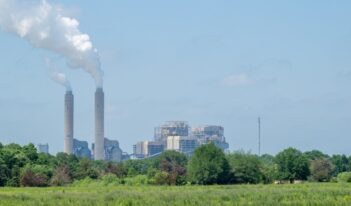
Economists investigate responses to civil and criminal enforcements of environmental violations.
According to an agency report relased last month, the U.S. Environmental Protection Agency (EPA) performed 19,000 inspections, delivered 3,000 administrative charges, and completed 3,241 civil cases and 250 criminal cases throughout fiscal year 2011. Due to enforcement actions, companies were required to invest about $19 billion last year to control their pollution and were forced to pay $168 million in fines. Company managers who were convicted of environmental crimes will serve a combined total of 89 years of incarceration.
But does this adversarial force really lead to substantial improvements?
Economists Wayne Gray and Jay Shimshack investigate the impact of enforcement in their recent paper, “The Effectiveness of Environmental Monitoring and Enforcement: A Review of the Empirical Evidence.”
They examine the available research to assess whether enforcement actions produce deterrence, leading to improvements in a company’s behavior. They specifically considered whether companies would choose to comply when the money saved by polluting is lower than the expected cost of enforcement, that is, the perceived risk of being caught and punished multiplied by the magnitude of the punishment.
Gray and Shimshack found that traditional enforcement does significantly increase compliance. They stated that, “this suggests that significant increases in environmental quality might be achieved through small incremental investments in environmental monitoring and enforcement.”
Generally, facilities regulated under the Clean Air Act or Clean Water Act responded equally to inspections and civil or criminal enforcement. Enforcement under hazardous waste treatment regulations appears to enjoy a similar response: increasing the possible fines significantly decreased plants’ violation probabilities. Fines against a single company or facility often acted to deter other, geographically close facilities. That impact even extended to already-compliant companies that reduced their emissions even further below the set minimums.
Gray and Shimshack recommended that EPA further study enforcement in order to better inform policy decisions. Such studies should address how enforcement affects future behavior of both the sanctioned facility as well as other members of the regulated community. Additionally, future research could compare the efficiency of traditional and alternative forms such as informational programs that are less adversarial, as well as study the efficiency of the different types of enforcement, the influence of individual plant characteristics, and enforcement effectiveness in other countries.
EPA’s annual Enforcement and Compliance Report released this month indicates further areas for research in the context of enforcement, specifically location, issue, and collaboration. Local or regional forces may play a role in deterrence; this variability can be explored more easily with an online map released by EPA.
Companies may also be more responsive to punishment against a similar company in the context of the enforcement priorities EPA establishes every three years. Finally, it is worth investigating how EPA collaboration with other government bodies might influence deterrence.



